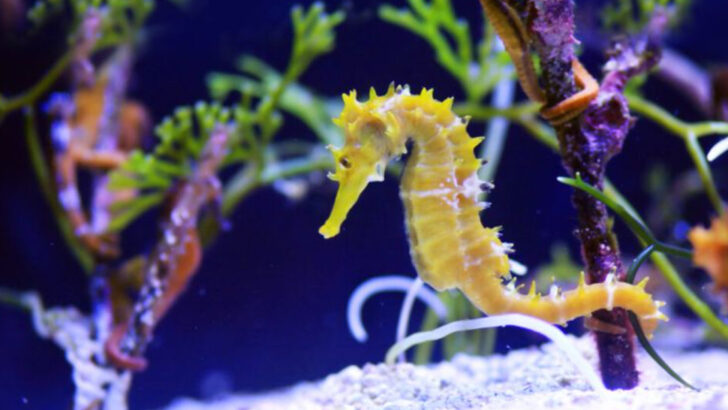Seahorses are not your average fish.
They swim upright, refuse to rush, and—most shocking of all—the males are the ones that give birth. These tiny, mystical creatures look like something out of a fairy tale, but their lives are full of surprises that even the biggest ocean lovers don’t always know.
Did you know some seahorses can change color like chameleons? Or that they have no teeth and no stomach, yet still manage to survive? These delicate-looking animals are tougher, stranger, and more fascinating than they seem.
Get ready to uncover some of the wildest facts about seahorses—secrets that will make you see them in a whole new way!
Seahorses Are Monogamous
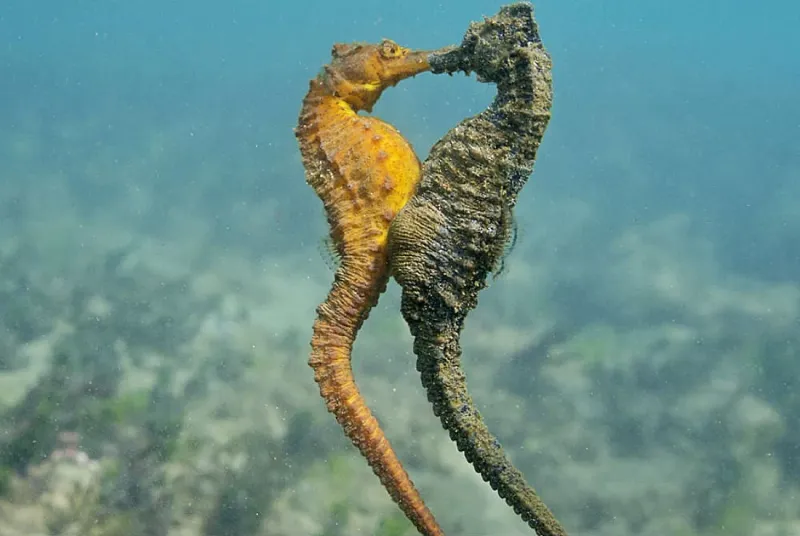
Seahorses are known for their unique monogamous relationships, often forming bonds that last their entire lives. These enchanting creatures engage in a daily dance with their partner, reinforcing their connection. Unlike most other animals, it’s the male seahorse that carries the offspring, nurturing them in a special brood pouch. This unusual parenting role emphasizes the deep bond between seahorse pairs, allowing them to share responsibilities equally. The sight of two seahorses swimming side by side, tails entwined, is a testament to their loyal and loving nature. Their commitment to each other is truly heartwarming.
Male Seahorses Give Birth
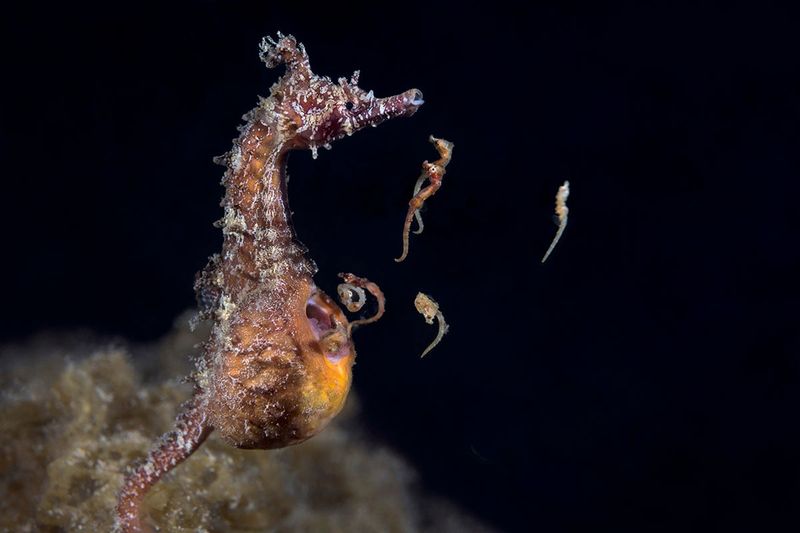
In the world of seahorses, it’s the males that experience the miracle of childbirth. Male seahorses possess a special brood pouch where the female deposits her eggs. After fertilization, the male carries and nourishes the developing embryos. This role reversal in pregnancy is rare in the animal kingdom, making seahorses stand out. As the pregnancy progresses, the pouch swells, eventually leading to the birth of fully formed tiny seahorses. This fascinating reproductive process highlights the unique and extraordinary nature of these creatures. Their nurturing instincts are both surprising and captivating.
Seahorses Have No Stomach
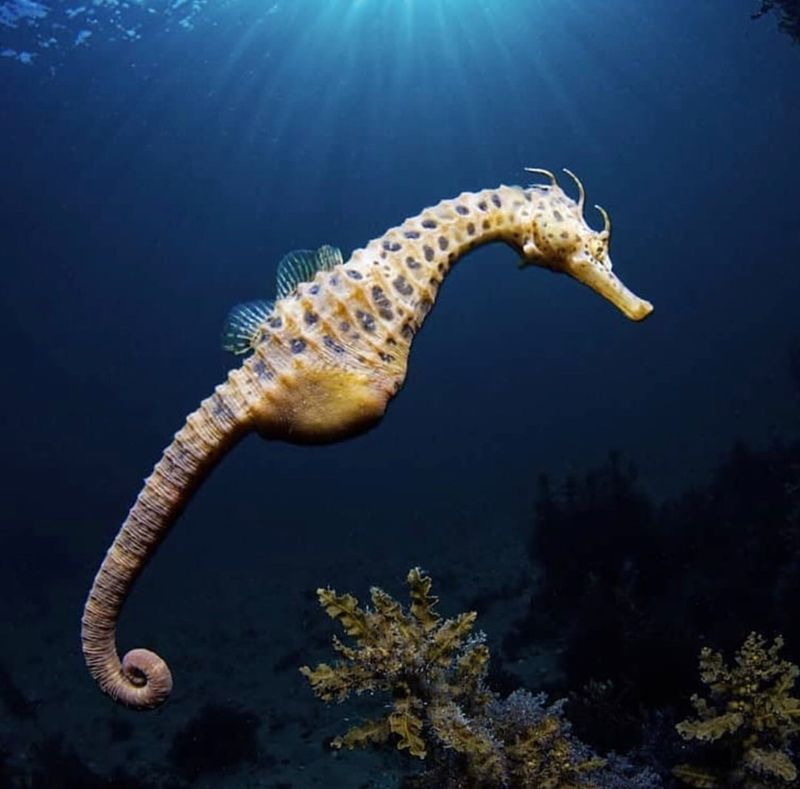
Unlike most animals, seahorses don’t have a stomach to digest their food. Instead, they possess a simple digestive system that processes their meals quickly. This means they need to eat almost constantly to stay nourished. Seahorses mainly feed on tiny shrimp and plankton, using their long snouts to suck up food like a vacuum. This continuous feeding habit is essential for their survival, requiring them to be efficient hunters. The absence of a stomach is an intriguing adaptation, emphasizing the seahorse’s unique approach to life under the sea.
Seahorses Can Change Color
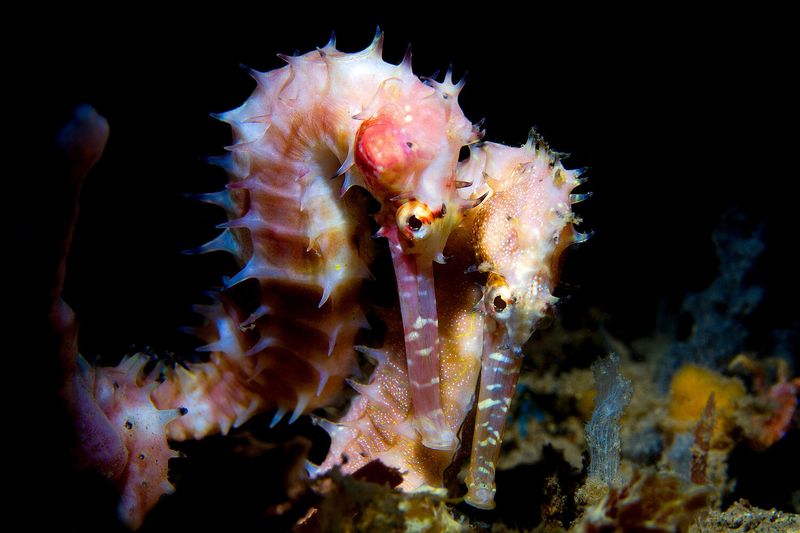
Seahorses possess the remarkable ability to change color, a skill they use for communication and camouflage. This chameleon-like talent allows them to blend into their environment, avoiding predators and sneaking up on prey. The process involves specialized cells called chromatophores, which can alter the color of their skin. This ability is not only fascinating but also serves as an important survival tool. Watching a seahorse shift through an array of colors is like witnessing a living canvas. Their artistic charm is truly mesmerizing, showcasing nature’s creativity in full splendor.
Seahorses Are Poor Swimmers
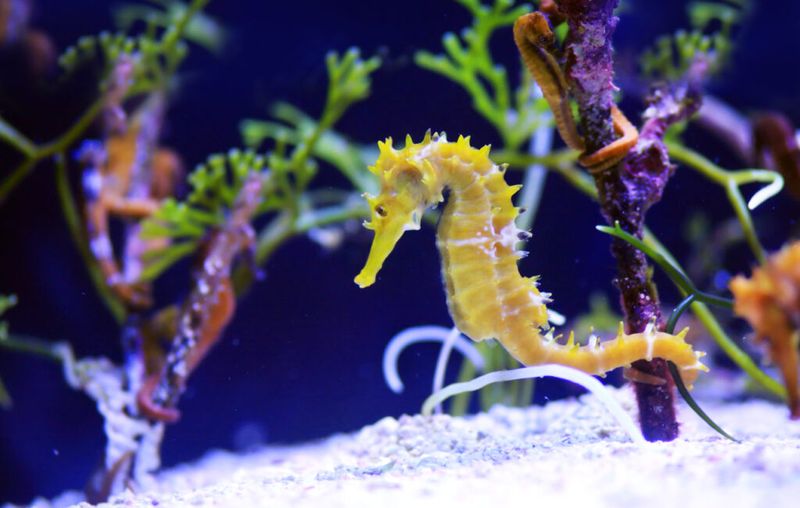
Despite their graceful appearance, seahorses are surprisingly poor swimmers. Their upright posture and small fins make it difficult to move quickly through the water. Instead, they rely on slow, deliberate movements to navigate their surroundings. Seahorses often anchor themselves to seaweed or coral with their prehensile tails to avoid being swept away by currents. This cautious approach to movement is necessary for their survival, allowing them to conserve energy. While their swimming skills may be lacking, their ability to adapt to their environment is truly impressive.
Seahorses Communicate by Clicking
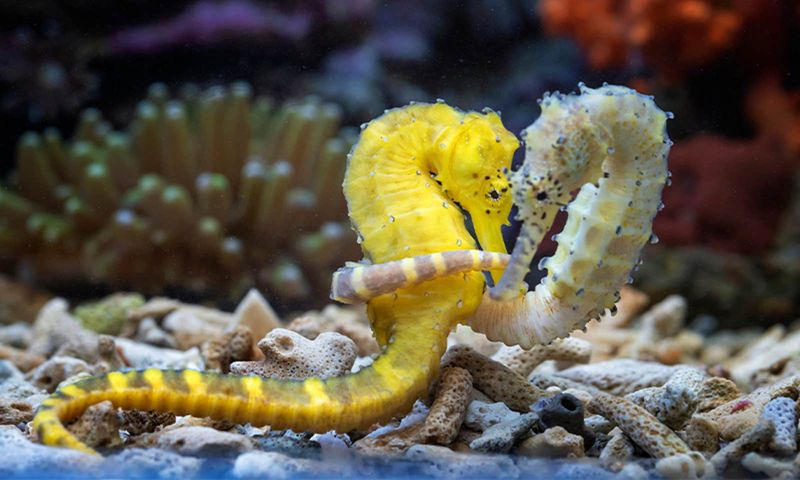
Seahorses have a unique way of communicating with each other: they produce clicking sounds. These noises are created by the rapid snapping of their heads and can convey various messages. Communication is vital for seahorses, especially when maintaining their monogamous relationships or signaling distress. The clicking sounds help strengthen bonds and alert them to potential dangers. This fascinating form of interaction adds another layer to the complexity of seahorse behavior. Listening to these gentle clicks feels like eavesdropping on a secret underwater conversation. Their vocal talents are as charming as they are intriguing.
Seahorses Have an Exoskeleton

Seahorses are equipped with an unusual armor-like exoskeleton made up of bony plates. This external skeleton provides protection against predators and supports their delicate bodies. Unlike fish with scales, seahorses’ bodies are encased in this hard shell, offering a different kind of defense mechanism. The structure is both functional and beautiful, resembling a mosaic of interlocking pieces. It not only keeps them safe but also gives them a distinct appearance that sets them apart in the marine world. Their bony exterior is a testament to their resilience and adaptability.
Seahorses Have Prehensile Tails

The seahorse’s prehensile tail functions like a tiny hand, allowing it to grasp onto objects in its environment. This adaptation is crucial for survival, especially since seahorses are not strong swimmers. By wrapping their tails around seaweed or coral, they can anchor themselves securely. This gripping ability helps them avoid being swept away by currents, providing stability in their often turbulent surroundings. The prehensile tail is not just practical but adds to the seahorse’s charm, highlighting its cleverness and resourcefulness. Observing a seahorse in action is truly an enchanting experience.
Seahorses Can Move Their Eyes Independently
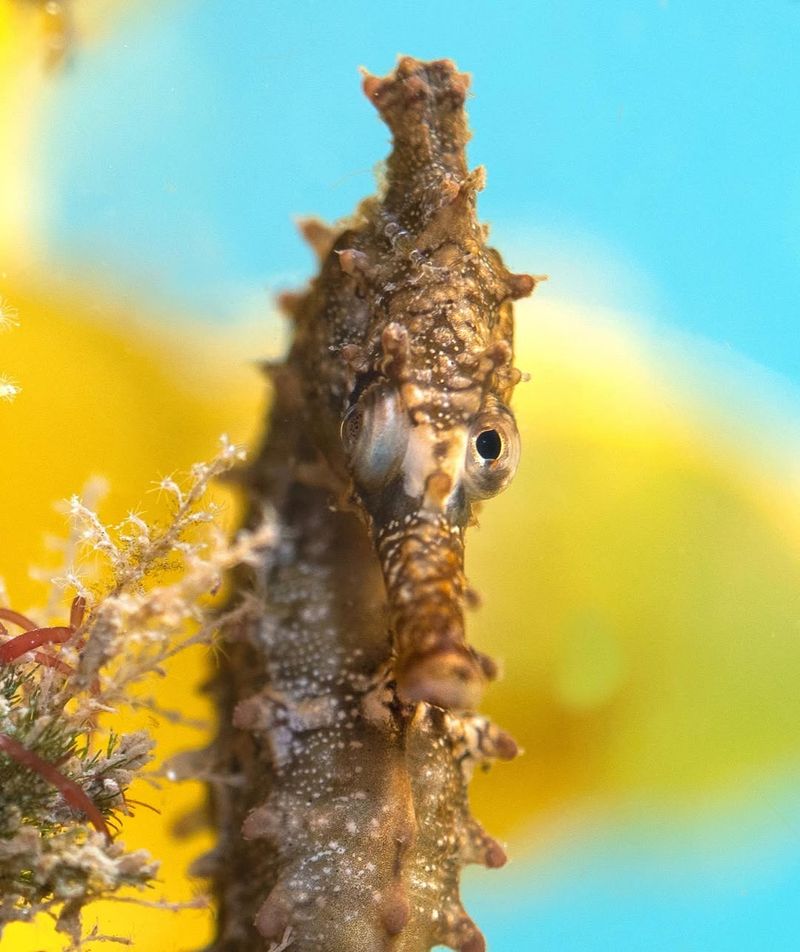
One of the most intriguing features of seahorses is their ability to move their eyes independently. This remarkable skill allows them to scan their surroundings efficiently, spotting predators or prey without turning their heads. Each eye can focus on different objects simultaneously, providing a comprehensive view of their environment. This ability is particularly advantageous for hunting, as it enables precise targeting of tiny shrimp and plankton. The seahorse’s independent eye movement is a testament to its evolutionary ingenuity, showcasing nature’s brilliance in adapting to life’s challenges under the sea.
Seahorses Are Found Worldwide
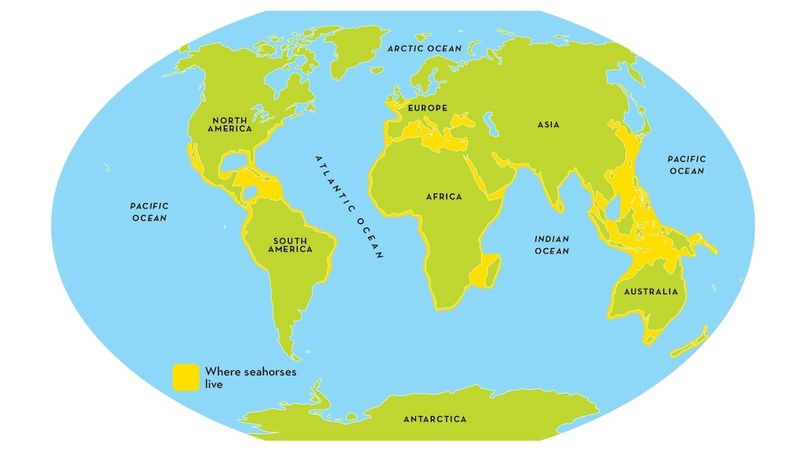
Seahorses are not confined to a specific region; they thrive in oceans all around the world. From the warm waters of the tropics to the chilly seas of temperate regions, these versatile creatures have adapted to various habitats. They often reside in shallow coastal areas, where they can find ample food and shelter. The widespread distribution of seahorses speaks to their adaptability and resilience. However, habitat destruction and pollution threaten their populations. Protecting their diverse homes is essential to preserving these enchanting animals for future generations.
Seahorses Are Ancient Creatures
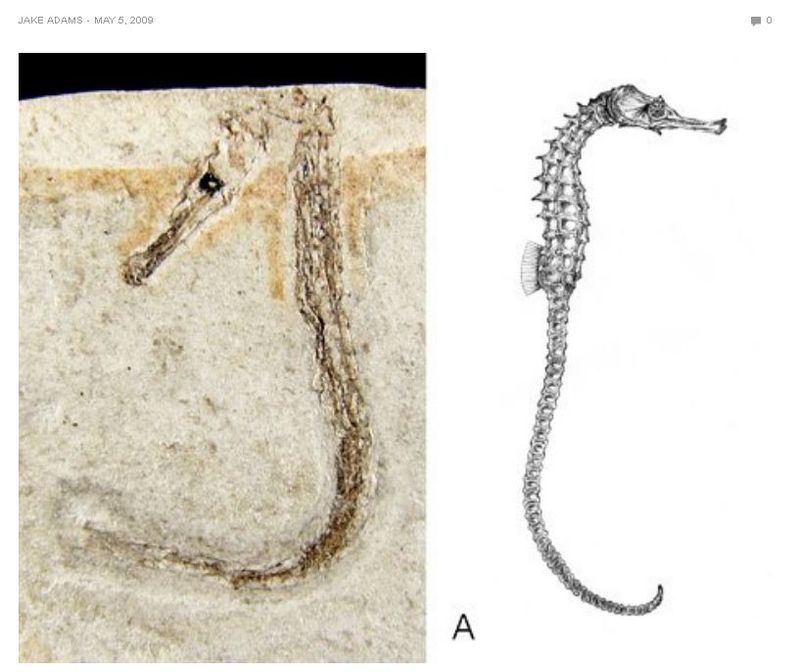
Seahorses boast an impressive lineage, with ancestors dating back over 25 million years. Fossil records reveal that these captivating creatures have existed in various forms throughout history. Their enduring presence in the ocean is a testament to their adaptability and resilience. Throughout the ages, seahorses have evolved to meet the challenges of changing environments, developing unique features that set them apart. Their ancient lineage adds a sense of mystery and wonder to their existence, capturing the imagination of scientists and enthusiasts alike. They are living relics of a bygone era.
Seahorses Can Grow and Shrink

Seahorses have the astonishing ability to change size, growing or shrinking to better fit their environment. This adaptation helps them survive in different habitats, allowing them to match their size with available resources. The ability to grow or shrink is a survival strategy that ensures they remain inconspicuous to predators and competitive for food. It’s like a natural resizing feature that keeps them in harmony with their surroundings. Witnessing a seahorse adjust its size is like watching nature’s magic unfold, highlighting their incredible flexibility and adaptability.
Seahorses Are Symbolic in Various Cultures
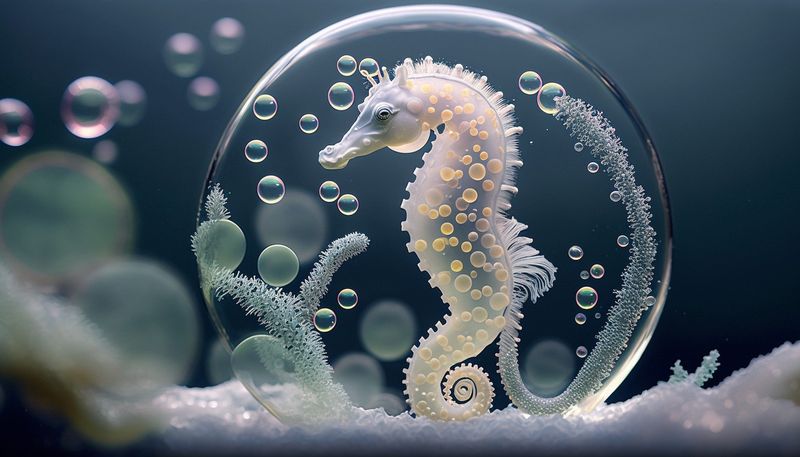
Throughout history, seahorses have held symbolic meanings in various cultures. In ancient Greek mythology, they were associated with the sea god Poseidon and symbolized strength and power. In Chinese culture, seahorses are considered a good luck charm, believed to bring prosperity and fortune. Their enchanting appearance has also inspired art and fashion, making them a popular motif in jewelry and tattoos. The cultural significance of seahorses adds layers of intrigue to their already fascinating existence, connecting them to human history in unexpected ways. They are truly creatures of legend.
Seahorses Are Endangered
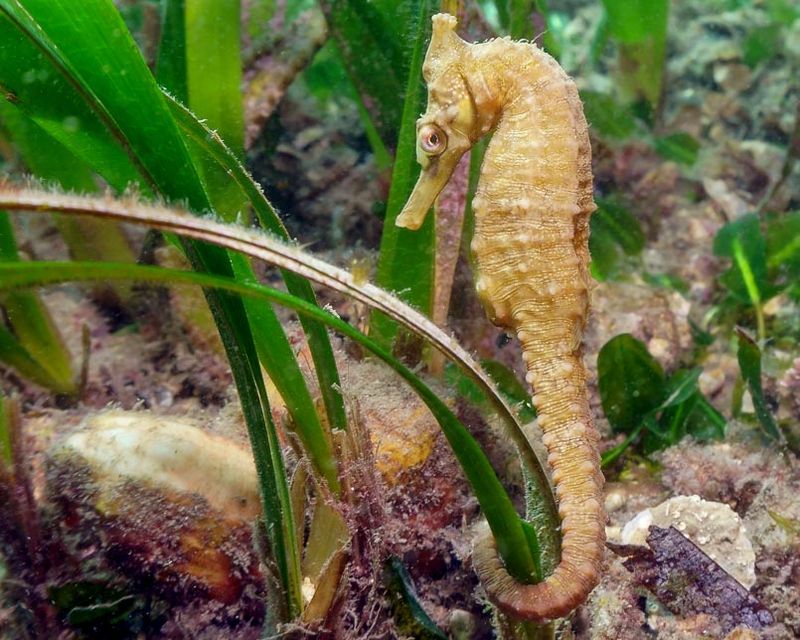
Many species of seahorses are considered endangered due to habitat loss, pollution, and overfishing. These gentle creatures are caught for traditional medicine, souvenirs, and the aquarium trade, further threatening their survival. Conservation efforts are underway to protect seahorses, emphasizing the need to preserve their habitats and regulate fishing practices. Marine sanctuaries play a crucial role in providing safe havens for these enchanting animals. Raising awareness about their plight is essential to ensuring their future. Protecting seahorses is a responsibility that extends beyond the ocean, touching the lives of those who cherish nature.
Seahorses Have Unique Feeding Habits
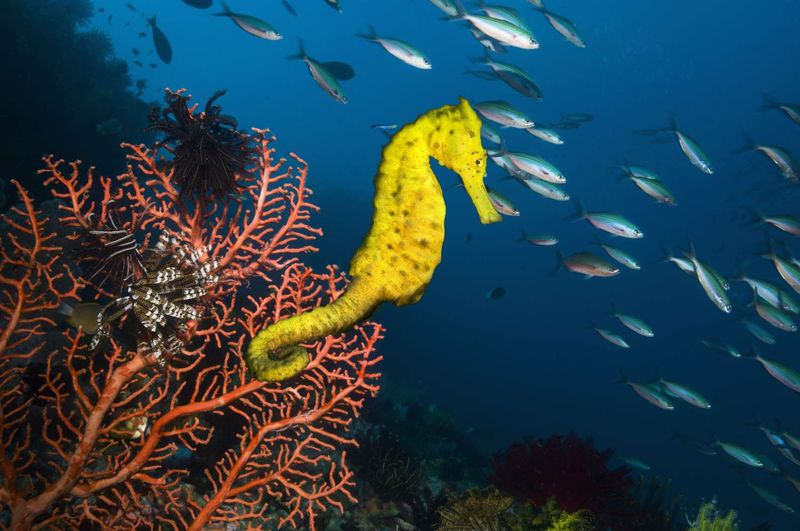
Seahorses have developed unique feeding habits that set them apart in the marine world. Using their elongated snouts, they suck in food like a vacuum, targeting tiny shrimp and plankton. This specialized feeding technique allows them to consume prey efficiently without alerting other predators. Their small mouths and quick reflexes enable them to catch even the most elusive meals. The seahorse’s feeding strategy is a marvel of nature, demonstrating their evolution to thrive in competitive environments. Observing a seahorse in action is a captivating reminder of the delicate balance within the ocean’s ecosystem.

